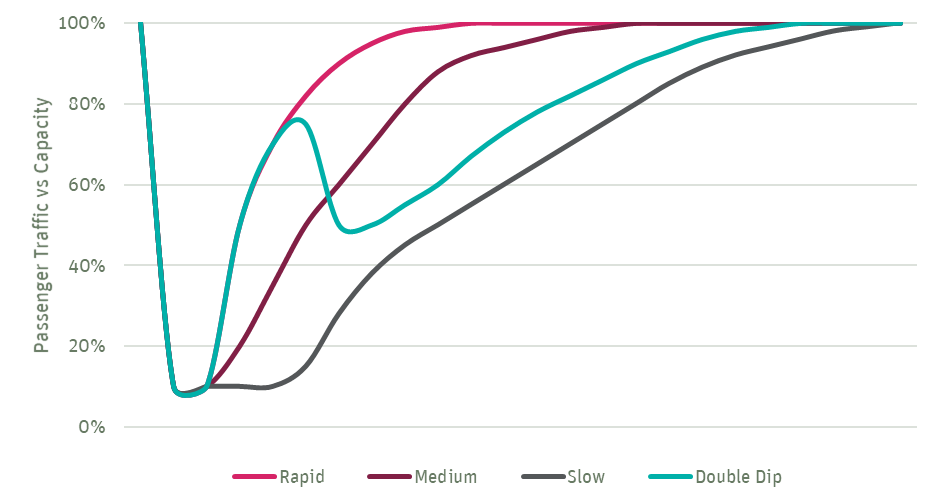The world over, ANSPs and airports are currently operating at reduced staffing levels in response to far fewer flights in need of service. As such, controllers are either working less frequently or not at all through furlough schemes. Even those now on-shift in the ops room and tower environments are starting to lose the valuable skills that they need to safely manage high intensity traffic.
These organisations’ understandable initial reaction has been to restrict focus to the ‘here’ and ‘now’ by putting the brakes on research and development activities to mitigate cash flow issues. That said, we now know a lot more about the industry situation and have a good understanding of how things will play out in the short-term. As such, we have the opportunity to think about how we can utilise available resources to benefit operations through the next six months, 18 months, and five years.
In this blog, we’ll delve into the balance of priority vs urgency and how that impacts operational development and human performance across all timescales and the industry begins to recover.
The Cost of Accepting Skill Degradation
Firstly, we should consider the collective price of keeping ATCOs and their skills ‘on ice’ for an extended period of time. After all, once lockdowns around the world begin to lift, that 90% of traffic will not return overnight. Many are realistically expecting the process to last 3-4 years, which has major implications for staff management over the coming years. Staff turnover also needs to be considered, as some controllers will retire, requiring new trainees to step into their shoes as rostering levels start to increase.
While the needs to save costs and close sites was urgent, as time draws on, any controller skills associated with managing high traffic levels will inevitably weaken and at an increasing rate, including task management, cognitive offloading, team communication and so on. Safety also needs to be considered here, as ATCOs need to retain the ability to maintain that high workload for long periods without the occurrence of any safety events (e.g. separation losses) in order for operational risk to remain acceptable. If we cannot be certain that these skills have been retained at the point that they’re needed once again, organisations will surely be forced to undertake additional training and assessments to replace skills and assure competency, resulting in significant complications and financial cost being incurred. So are there greater priorities?
Making the Most of your Controllers Today
Managing ATCOs in this situation is a great challenge due to the unique characteristics of their role. Clearly, a greater degree of flexibility would aid organisations in rostering and supporting their staff.
Let’s explore an alternative, keeping a much greater proportion of your controllers active by assigning them to concept development, validation and simulation initiatives while not needed in the ops room. These may include preparations for larger SESAR exercises, assessing options for new airspace designs, or trialling ATCO suggestions for improved procedures. Traffic demand is likely to be volatile in these next few months and having prepared controllers readily accessible to respond to fluctuations is a great advantage.
This approach provides greatly added value to rostering in the short term, where ATCOs are presently being paid to stay home and therefore providing no benefit to their organisation. Beyond the R&D advantages, several benefits to human performance can also be gained through this approach. Of course, providing controllers with regular opportunities to operate at high 2019 or even future traffic levels would allow them to preserve the same controller skills and stay mentally engaged.
Similarly, controllers will be able to perform tasks in the full team configuration by operating split sectors where, in the current environment, one controller would be operating several of them bandboxed. This helps to maintain teamwork skills and communication techniques between working positions that aren’t needed in live operations today.
The Prospect of Months of Unconstrained Development
A second period of recovery is likely involve an abrupt return to 80-90% of maximum capacity. This will require organisations to either recall all of their staff at low effort or small groups at a time, as needed. If this period is expected to last for several years, then it may be appropriate for ANSPs to adjust airspace sectorisations to make operations cost-effective.
At a high level, this collective experience may push the industry towards more flight-centric controlling, with little need for sectors or specific validations. This creates much greater flexibility for staffing and resolve human performance issues related to reduced demand, such as difficulties in maintaining situational awareness, extended low workload, the associated fatigue and job dissatisfaction.
Although cash flow poses an issue for ANSPs and large airports, government support is in place to ensure that they do not make a significant loss year-on-year. Therefore, cutting all funding to R&D efforts may be viewed as the more short-sighted choice in retrospect and may represent a lost opportunity to catch up with new technology and developments in the long term.
After all, securing suitable ATCO resource and time in simulation facilities is normally a significant challenge, often negatively impacting the realism and value of activities as the planned scope is compromised by logistical constraints. In extension, this often leads to an approach where an R&D project will have to place heavy dependency on the success of one large-scale and expensive simulation, which has no guarantee of success. Even if it is impossible to co-locate everybody in the usual sim facility, there are innovative ways around this, such as remote-RTS.
With participants and simulated working positions more ready to hand, projects can afford to be more adaptive and exploratory with their simulations in the knowledge that further opportunities to trail different options and refine experimental designs are always available. Similarly, trainee controllers could progress their development through supporting simulations as feed controllers or pseudo-pilots. This availability presents an unprecedented opportunity to explore future solutions.
The Long Road Back to Full Capacity
It is clear that the path back to the market situation we had at the end of 2019 will be a long one and that the last 10-20% of traffic will take a number of years to return. The latter stages of recovery will also greatly depend on the extent to which nations coordinate on supporting a return to air travel. As shown in the diagram below, the range of potential outcomes is broad.

As such, ANSPs and airports need to have the capability adjust their staffing along with demand in a way that is cost-effective and manageable. ATCOs can be fully-equipped to re-enter busier working conditions at short notice, rather than missing competencies and in need of support and/or supplementary training. Pulling staff out of furlough or increasing recruitment is far more expensive and troublesome that recalling them to the ops room once R&D activities conclude.
Additionally, investing in evaluating SESAR solutions which benefit flexibility and resilience should not be ignored in an effort to reduce costs, as these improvements will ultimately prepare the industry against future potential scenarios. Implementing solutions that keep ATCO demand at an appropriate level will lead optimum cognitive demand and ensure safe and efficient ops while aligning with the future airspace architecture direction.
Through this exploration, I hope that I have demonstrated that there are viable alternatives to the ‘batten down the hatches’ approach that can support human performance in the short-term, benefit technological improvement in the medium-term and support the long-term recovery process. It’s often that the urgent things obscure the real priorities, and it is difficult to see before the dust settles, where the greatest value lies.

Author: Jonathan Twigger, ATM Consultant


Recent Comments